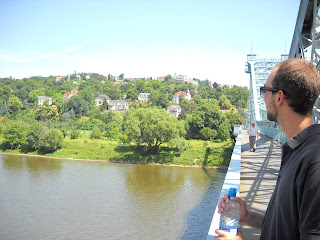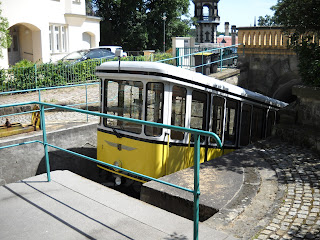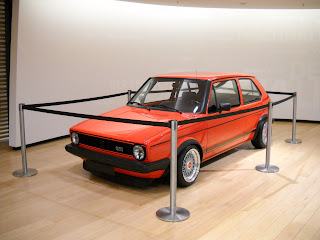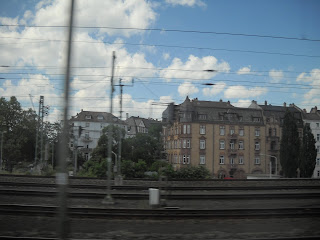Disclaimer: if you want the legit history, get a book. This is my very silly, over the top version infused with humor, slang and whatever other literary spices I have jangling around up in ye olde noggin; not necessarily with researched facts, although I try not to be incorrect if I can.
And now, the abridged version of the story as according to yours truly....
August the Strong being king or whatever, had a sweet chunk of change to throw around as he pleased, and since he had a thing for mistresses, lavish parties and real estate, by god he threw it around something terrible. So one day, August meets this sweet young thing by the name of Anna Constantia. She is the daughter of a knight from Hamburg who happened to raise her with quite an education. She spoke multiple languages, was good with math and had a taste for hunting as well as several other qualities that got August's attention. Not surprisingly the two hit it off swimmingly and Augs decided that she would be his new official court mistress. Thus, via some inner workings of feudal courts and such, she gains the title of "Countess Cosel" (damn it Jim, I'm a traveler not a lawyer). So the Countess tags along with the Augster to parties, court stuff and pretty much anything where he wanted to look good, i.e., everything. Things were going awesome for the power couple, so August the Strong, sugar daddy that he was, took a gander at the Chinese architecturally inspired Pillnitz palace and thought, "yo, I'm totally gonna snag that for my main squeeze and we're gonna have swingin' parties and rage it up!" (Cue AC/DC's 'highway to hell'). Legend has it that around the same time that he gifts this palace to the countess, he also makes some sort of marriage proposal (note, he already had a wife and other mistresses and she had been married at least once previously and had at least one kid under the radar... cue 'chain of fools'). Countess Cosel takes the palace and the marriage proposal note and puts in her pocket for later... *wink*. Anyway, about 7 years go by, the couple has 3 kids, the countess has become ever more involved in August's politics (much the the chagrin of everyone in the court) and had still not returned his proposal. Needless to say, she was starting to make enemies and August was getting a little peeved; so she said, "sucks to your assmar" and high-tailed it to Berlin leaving everyone in Dresden to eat her dust.
Now, being something of a smarty-pants you would think Cos-alicious would have realized you don't just dip out on August the Strong after he has hooked you up with palaces and the like for 7 years. Predictably enraged, August declares his old mistress a traitor of the state, pulls a Dubya and sends out the order to "smoke her out, round her up, and bring her to justice". Before she can unpack her matched luggage in Berlin, August's men are breaking the door down and are carting her off to her new home at Stolpen Castle. She would remain locked in a tower at this new castle (new to her, it was a used castle) for some 49 years where she eventually punched her ticket to the afterlife. Unfortunately for Countess Cosel, she had made so many enemies in the court that even after August kicked the bucket, the court members (and presumably her own children) decided to just keep here locked up so she wouldn't meddle in their affairs again.
Ok so, back to the trip.
So there we were, riding in Peggy's car into some lovely Saxon countryside. We decided to visit the Castle Stoplen first, as it has a closing time whereas the Palaces are sort of public domain. Similarly to our visit to Königstein, we arrived in a small town with a disproportionately large, old, fortress. The day was gray and threatening rain, which is pretty typical of European summer and we noticed some large modern windmills - the sort used for generating electricity - that were in no shortage of wind. After a brief search, we found some street parking that required you to park literally, half on the sidewalk (seriously there was a sign with a picture of how to do it). At this point we were happy to have Peggy with us because her German is about eight million times better than ours and there were no English signs to be seen anywhere. Also similarly to our Königstein visit, the way to get to the castle wasn't really clear. Luckily we found a local man in overalls who gave Peggy directions on which path to follow to get there. After a short stroll on what looked to me to be a bike path, we arrived at the gate of Stolpen castle. This castle had a distinctly different vibe to it compared to Königstein. Stolpen is built in the middle of a large basalt formation, which if you don't know, is a type of volcanic rock that forms into geometric columns.
 |
| The entrance. The coat of arms at the top of the doorway is said to be the most valuable part of the whole castle. |
 |
| Basalt pillars coming up from the ground. They built the castle on top using pieces of the basalt sort of like bricks. |
 |
| The basalt naturally forms in these geometric columns, this cluster has been sheered off allowing us to get a good view . |
 |
| The tower on the right is the one Countess Cosel was kept in. the little structure sticking out the right side about 3/4 up is her commode. |
 |
| Matt taking a look up at the Cosel tower. |
The staircases inside all of the towers were pretty treacherous spiral stone stairs that would spell disaster for anyone not surefooted who attempted to go up (or down).
 |
| One of the staircases. I assume the markings are the trademark of the masons who built them. |
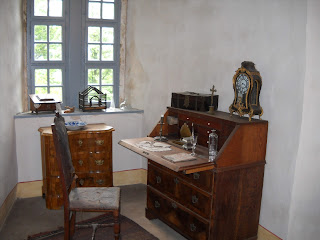 |
| Cosel's desk. |
After checking out Cosel's digs, we made our way back out of the tower and into the the rest of the castle. As with all fortresses Stolpen also had some battlements that included some very old cannons and mortars. In my opinion, the most impressive thing about the whole fortress was the water supply. They have a well that took some 34 years to dig through solid basalt rock. They used a technique that involved setting large wood fires on top of the rock which caused it to crack; this allowed some poor grunts to get in there and chip away at the rock with rudimentary tools. They were able to achieve something like one meter of progress per YEAR @_@... and you thought your job was bad!
 |
| A view of the town from one of the towers. |
After checking out the other two towers, the wine cellar and a cheeky little coin operated "ghost" we decided we had best make our way to the palaces!
 |
| A view of the 'Water Palace' from the courtyard. |
 |
| Matt and Peggy checking out the courtyard. |
More posts coming soon! Sorry this was a bit of a long one!














